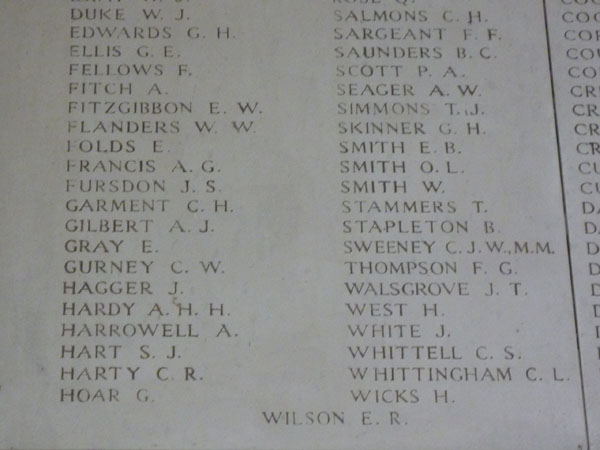F. Worthy
Service no. 4785
Rifleman, London Regiment (First Surrey Rifles), “D” Coy. 1st/21st Battalion
Enlisted in Lambeth; lived in Brixton
Killed in action on 15 September 1916, aged 19
CWGC: “Son of Alfred James and Matilda Clara Worthy, of 12 Normandy Road, Brixton, London.”
Remembered at Thiepval Memorial, Somme, France
In 1911 Frank Worthy was a 14-year-old schoolboy. He lived at 5 Addison Place, Brixton (now part of Normandy Road) with his parents, Alfred James Worthy, 45, a sign writer for the council, and Matilda Clara Worthy, 37, both born in Lambeth. Frank had two siblings. The family occupied four rooms.
Frank, who was born on 23 October 1898, attended Stockwell Road School and moving on in 1908 to Battersea Polytechnic Boys’ Secondary School, for which he received a bursary. He left in July 1914 to train as a teacher at London Day Training College.
Frank Worthy enlisted on 27 January 1916 in Lambeth, giving his age as 19, occupation as teacher and address as 5 Addison Place (since renamed Normandy Road), Brixton. He had previously been rejected for service. Frank stood 5ft 11in tall, with a chest measurement of 33½in. His moles on his upper right arm and abdomen were noted. He joined the British Expeditionary Force on 15 June 1916 and survived exactly three months after that.
The Worthys were members of the Plymouth Brethren.

